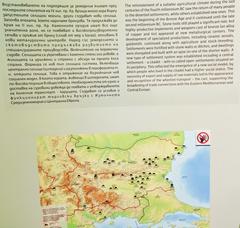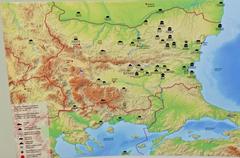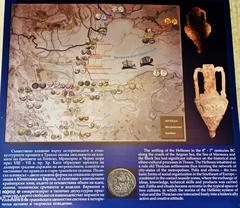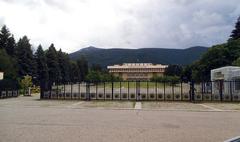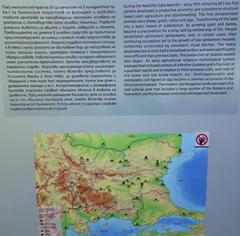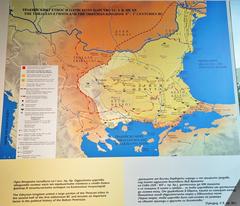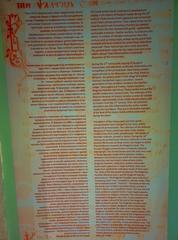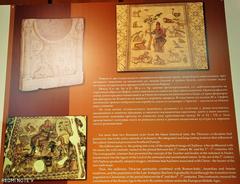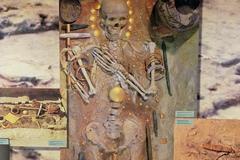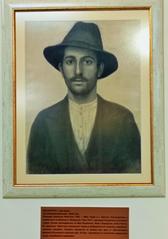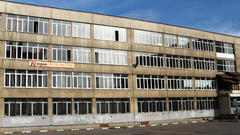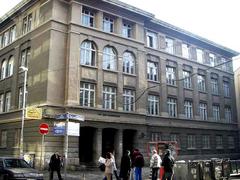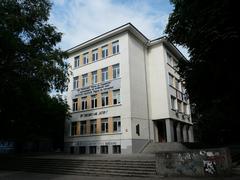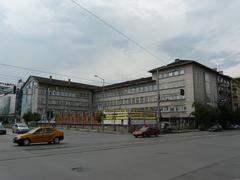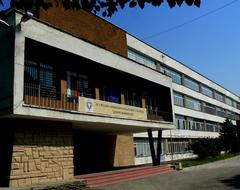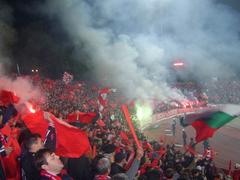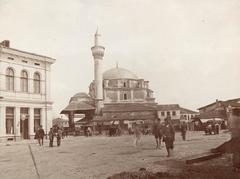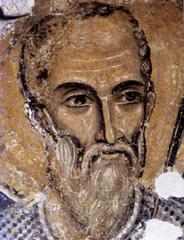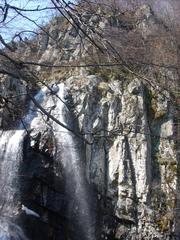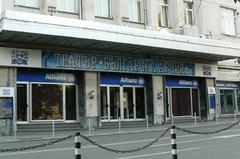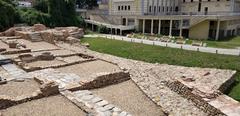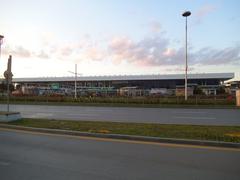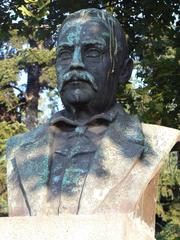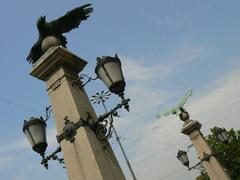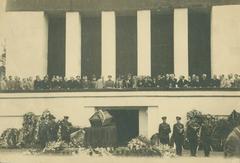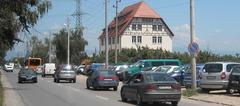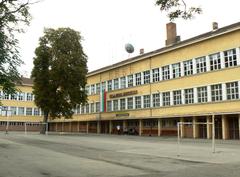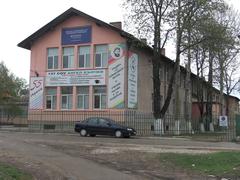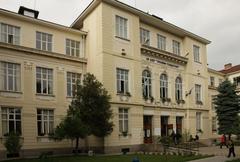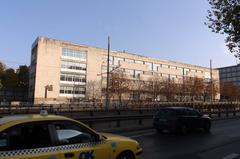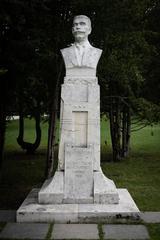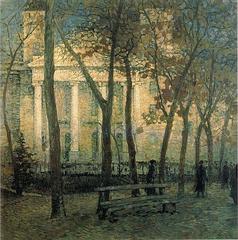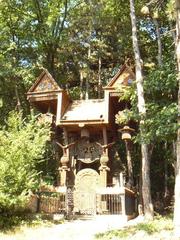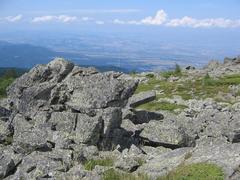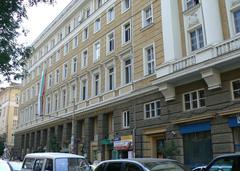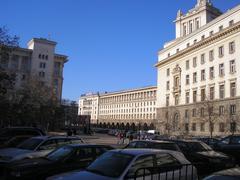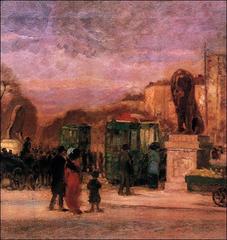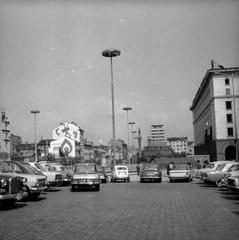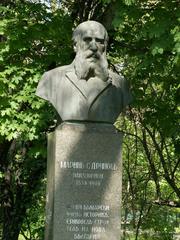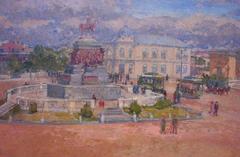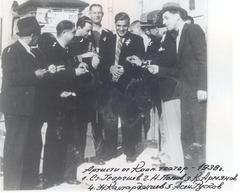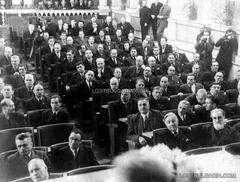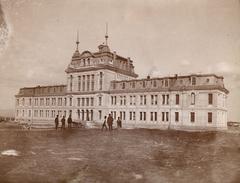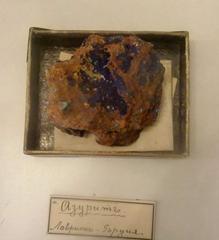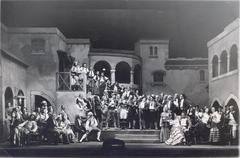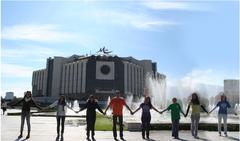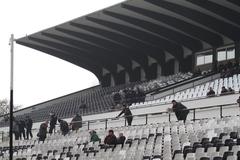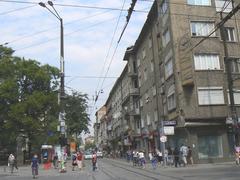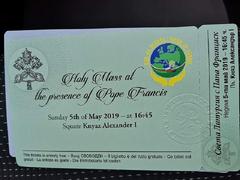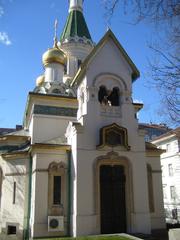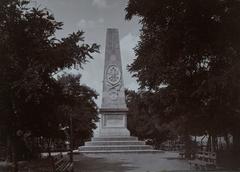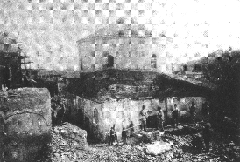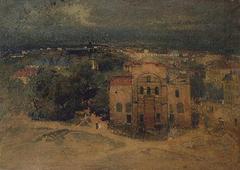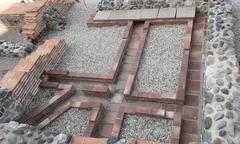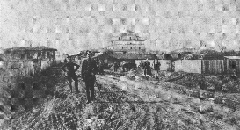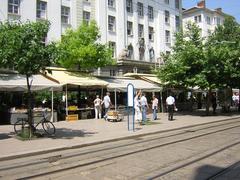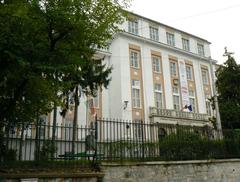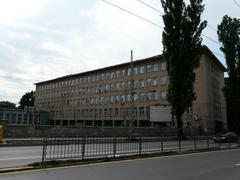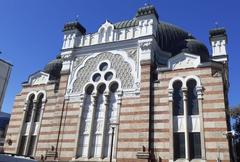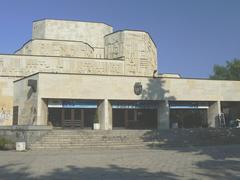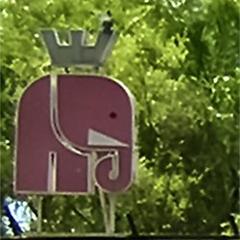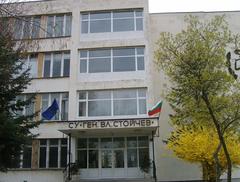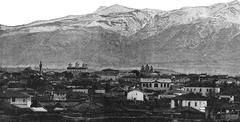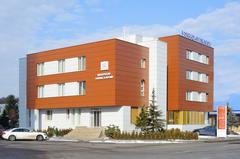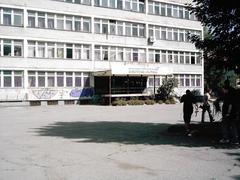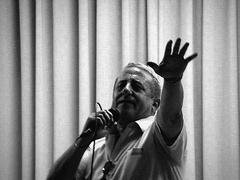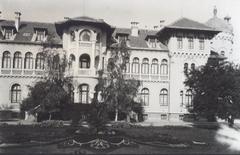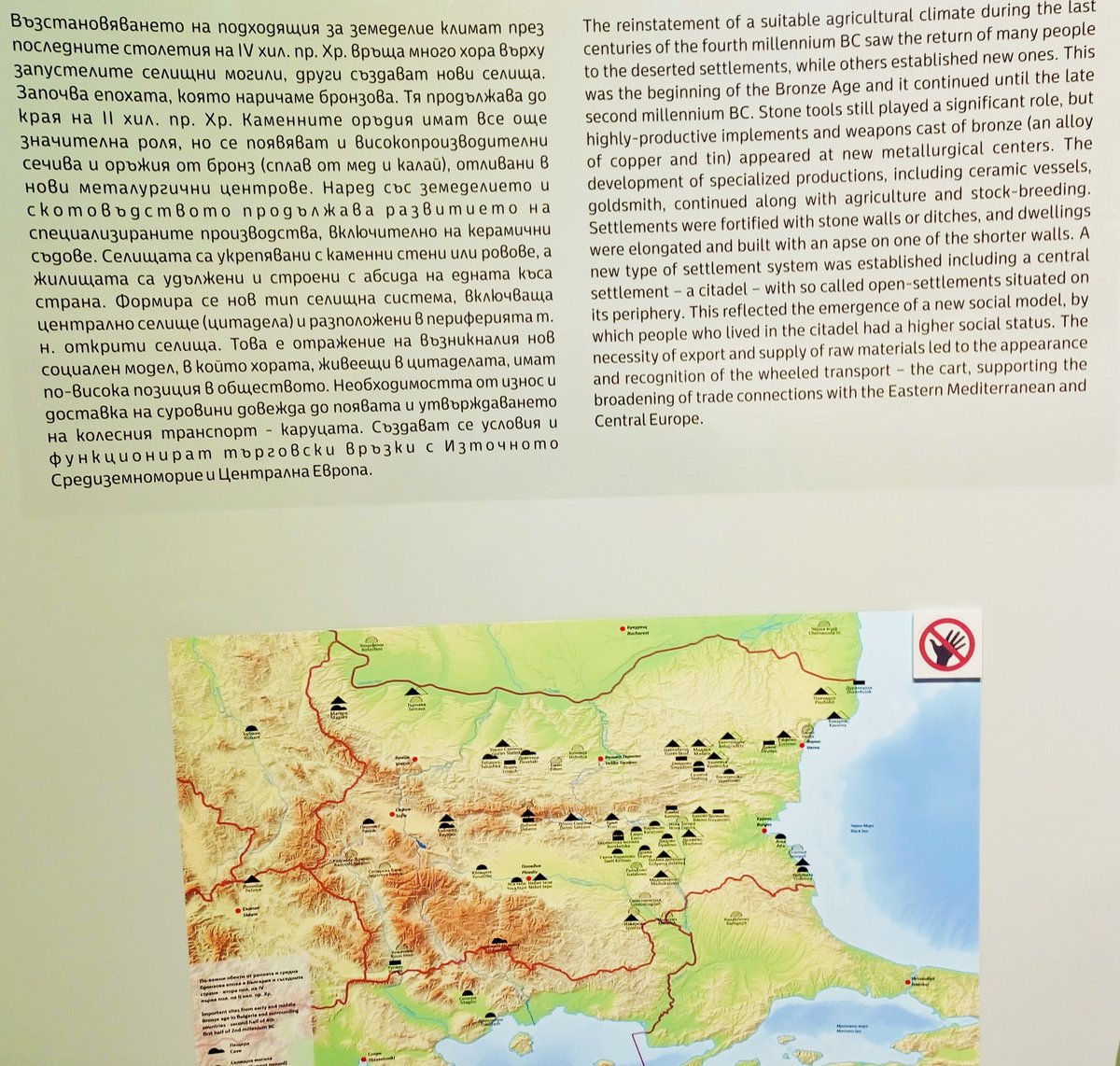
Visiting the National Historical Museum in Sofia: Hours, Tickets, and Tips
Date: 18/07/2024
Introduction
The National Historical Museum (NHM) in Sofia, Bulgaria, is a must-visit destination for anyone interested in exploring the rich tapestry of Bulgaria’s history and cultural heritage. Established in 1973, the museum has grown to become one of the most significant cultural institutions in the country, offering an immersive journey through Bulgaria’s past, from prehistoric times to the modern era. Initially housed in the Court of Justice building in the city center, the museum’s collection began with artifacts from various archaeological sites across Bulgaria, including those from the Thracian, Roman, and Byzantine periods. In 2000, the museum relocated to its current premises in the Boyana district, significantly expanding its exhibition space and allowing for a more comprehensive and engaging visitor experience (National Historical Museum).
The NHM boasts an extensive collection of over 650,000 artifacts, showcasing Bulgaria’s diverse cultural influences and historical periods. Visitors can explore notable exhibits such as the Panagyurishte Treasure, a collection of Thracian gold and silver vessels, and the Rogozen Treasure, the largest Thracian treasure found in Bulgaria. The museum’s educational programs, workshops, and guided tours cater to a wide range of interests and age groups, making it a valuable resource for both locals and tourists (Panagyurishte Treasure).
In addition to its rich collection, the NHM plays a crucial role in research and conservation, collaborating with national and international institutions to preserve and study its artifacts. The museum’s commitment to accessibility ensures that all visitors, including those with mobility issues, can enjoy its exhibits comfortably. With well-organized displays and interactive multimedia presentations, the NHM offers a comprehensive and engaging visitor experience that highlights the resilience and achievements of the Bulgarian people throughout history.
Table of Contents
- Introduction
- Establishment and Early Years
- Relocation to Boyana
- Collections and Exhibits
- Significant Artifacts
- Visitor Information
- Educational and Cultural Role
- Research and Conservation
- Visitor Experience
- Accessibility and Facilities
- Future Developments
- Frequently Asked Questions
- Call to Action
- Conclusion
- Sources
Explore the National Historical Museum in Sofia - History, Tickets, and Visitor Information
Establishment and Early Years
The National Historical Museum (NHM) in Sofia, Bulgaria, was established in 1973. Initially, the museum was housed in the Court of Justice building in the city center. The founding of the museum was part of a broader initiative to preserve and showcase Bulgaria’s rich historical and cultural heritage. The museum’s collection began with artifacts from various archaeological sites across Bulgaria, including Thracian, Roman, and Byzantine relics.
Relocation to Boyana
In 2000, the museum was relocated to its current premises in the Boyana district, a move that significantly expanded its exhibition space. The new location is the former residence of the Bulgarian Communist leader Todor Zhivkov, a building that itself holds historical significance. The relocation allowed the museum to display a more extensive collection and provide a more immersive experience for visitors.
Collections and Exhibits
The NHM boasts one of the most comprehensive collections of Bulgarian historical artifacts, spanning from prehistoric times to the present day. The museum’s collection is divided into several key sections:
Prehistoric and Ancient Periods
The prehistoric section includes artifacts dating back to the Paleolithic era, with notable items such as the Varna Necropolis treasures, which are among the oldest gold artifacts in the world. The ancient period section features Thracian treasures, including the Panagyurishte Treasure, a collection of gold and silver vessels dating back to the 4th-3rd centuries BCE (National Historical Museum).
Medieval Period
The medieval section covers the First and Second Bulgarian Empires, showcasing items such as medieval weaponry, manuscripts, and religious icons. One of the highlights is the Preslav Treasure, a collection of gold and silver jewelry from the 10th century, which provides insight into the craftsmanship and artistry of the period.
Ottoman Period and National Revival
The museum’s collection from the Ottoman period (1396-1878) includes artifacts that reflect the cultural and social changes during this era. The National Revival section highlights the struggle for independence and the cultural renaissance that occurred in the 18th and 19th centuries. This section features personal belongings of revolutionary figures, documents, and photographs that illustrate the period’s historical context.
Modern and Contemporary History
The modern history section covers the period from the Liberation of Bulgaria in 1878 to the present day. This section includes items related to Bulgaria’s participation in the Balkan Wars, World War I, and World War II. It also features exhibits on the socialist era, including propaganda materials, everyday objects, and items related to the political changes in the late 20th century.
Significant Artifacts
The NHM is home to several significant artifacts that are of great historical and cultural value:
The Panagyurishte Treasure
Discovered in 1949, the Panagyurishte Treasure consists of nine gold vessels, including a phiale, an amphora, and rhytons, all intricately decorated with scenes from Thracian mythology. The treasure is believed to have been used for ceremonial purposes by Thracian kings (Panagyurishte Treasure).
The Rogozen Treasure
The Rogozen Treasure, discovered in 1985, is the largest Thracian treasure found in Bulgaria. It consists of 165 silver and gold vessels, dating back to the 5th-4th centuries BCE. The treasure provides valuable insights into Thracian culture and their interactions with neighboring civilizations (Rogozen Treasure).
The Preslav Treasure
The Preslav Treasure, discovered near the medieval capital of Preslav, includes gold and silver jewelry, coins, and other artifacts from the 10th century. The treasure is a testament to the wealth and artistic achievements of the First Bulgarian Empire (Preslav Treasure).
Visitor Information
Opening Hours: The National Historical Museum is open from 9:00 AM to 6:00 PM every day except Mondays.
Ticket Prices: General admission is 10 BGN for adults, 5 BGN for students and seniors.
Location: Boyana district, Sofia, accessible via public transportation or car.
Facilities: The museum offers ramps and elevators for visitors with mobility issues, as well as audio guides and informational materials in multiple languages.
Educational and Cultural Role
The NHM plays a crucial role in the education and cultural enrichment of both locals and tourists. The museum offers various educational programs, workshops, and guided tours that cater to different age groups and interests. These programs aim to foster a deeper understanding of Bulgaria’s history and cultural heritage.
Research and Conservation
The NHM is also a center for research and conservation. The museum’s team of archaeologists, historians, and conservators work on various projects to preserve and study the artifacts in its collection. The museum collaborates with other institutions, both nationally and internationally, to conduct research and share knowledge.
Visitor Experience
The NHM provides a comprehensive visitor experience with its well-organized exhibits and informative displays. The museum’s layout allows visitors to explore Bulgaria’s history chronologically, providing a clear narrative of the country’s development over the millennia. Interactive exhibits and multimedia presentations enhance the visitor experience, making the museum accessible and engaging for all ages.
Accessibility and Facilities
The NHM is committed to making its exhibits accessible to all visitors. The museum offers facilities such as ramps and elevators for visitors with mobility issues. Additionally, the museum provides audio guides and informational materials in multiple languages to cater to international visitors.
Future Developments
The NHM continues to evolve, with plans for future expansions and new exhibits. The museum aims to incorporate more interactive and digital elements to enhance the visitor experience. Additionally, the NHM is working on expanding its outreach programs to engage with a broader audience and promote Bulgaria’s rich cultural heritage on a global scale.
Frequently Asked Questions
What are the visiting hours of the National Historical Museum?
The museum is open from 9:00 AM to 6:00 PM every day except Mondays.
How much are the tickets for the National Historical Museum?
General admission is 10 BGN for adults and 5 BGN for students and seniors.
Call to Action
For more information, visit the National Historical Museum’s official website. Don’t forget to download our mobile app Audiala for more historical site guides, and follow us on social media for the latest updates and travel tips.
Conclusion
The National Historical Museum in Sofia stands as a testament to Bulgaria’s rich and diverse cultural heritage, offering visitors an unparalleled opportunity to explore the nation’s history from prehistoric times to the modern era. With its extensive collection of artifacts, including the renowned Panagyurishte and Rogozen treasures, the NHM provides invaluable insights into the cultural and historical development of Bulgaria. The museum’s educational programs, workshops, and guided tours further enhance the visitor experience, making it a vital resource for both locals and tourists (National Historical Museum).
The NHM’s commitment to research and conservation, as well as its efforts to make the museum accessible to all visitors, underscores its role as a leading cultural institution. By preserving and showcasing Bulgaria’s historical artifacts, the NHM fosters a sense of national identity and pride, while also promoting cultural understanding on a global scale. Whether you are a history enthusiast, a student, or a casual visitor, the National Historical Museum offers a rich and immersive experience that is sure to leave a lasting impression. For more information and to plan your visit, be sure to check out the museum’s official website and follow their updates on social media.
Sources
- Explore the National Historical Museum in Sofia - History, Tickets, and Visitor Information, 2024, National Historical Museum
- Exploring the National Historical Museum in Sofia - Visiting Hours, Tickets, and Cultural Significance, 2024, National Historical Museum
- Essential Visitor Tips for the National Historical Museum in Sofia - Hours, Tickets, and More, 2024, National Historical Museum
